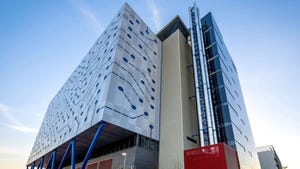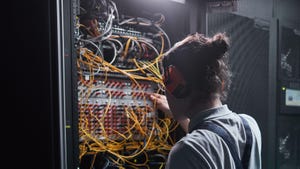7 Top Data Center Sustainability Strategies for 20257 Top Data Center Sustainability Strategies for 2025
Data center sustainability is more critical than ever as energy demands surge. Here are seven key strategies to improve efficiency and reduce carbon impact.

Data center energy demands are soaring. At the same time, many businesses face intense pressure – and, in some cases, regulatory requirements – to operate efficiently and sustainably.
Reconciling these two trends can be challenging because the more energy data centers use, the harder it becomes to minimize their carbon footprints.
This is why strategies for improving data center sustainability have become more important than ever – and are likely to remain so indefinitely as trends like AI continue to increase the amount of electricity data centers consume and, by extension, the amount of carbon they generate.
But what do those strategies entail, exactly? Keep reading for answers as we round up common techniques for improving data center sustainability.
1. Sourcing Renewable Energy
One obvious way for data centers to operate more sustainably is to source electricity from renewable sources, such as wind, solar, and geothermal.
A major challenge is that the availability of renewable energy sources can vary by time of day or season – which is why few data centers can realistically operate based on renewables alone. In addition, unless data center operators build their own power plants and infrastructure – which few beyond the major hyperscalers can afford to do – they usually need to rely on the generic grid, where the source of power can vary frequently, making it difficult to guarantee that a fixed percentage of energy comes from renewable sources.
Still, generating at least some energy from “clean” sources is feasible, and it’s a major step that data centers can take toward being more sustainable.

The design and layout of components within data centers can significantly impact their energy efficiency. Image: Alamy
2. Improving Data Center Cooling Efficiency
Cooling systems are among the most energy-intensive components of a typical data center. This means that the more energy-efficient your cooling system becomes, the more sustainable your data center will likely be. In addition, more efficient systems may reduce water consumption – another key factor in sustainability.
This is why cooling technologies like direct-to-chip are gaining popularity. They’re pricey compared to traditional, air-based cooling, but they translate to significantly lower energy costs. And if you really want to maximize cooling efficiency, you can invest in immersion liquid cooling.
3. Optimizing Data Center Design and Layout
The design and layout of components within data centers can significantly impact their energy efficiency and carbon cost. To that end, simple steps like optimizing the layout of racks within the server room or using a raised floor can have a major impact on sustainability.
4. Choosing Energy-Efficient Building Materials
Building data centers using “green” materials – such as recycled steel and low-carbon concrete – helps to minimize the carbon impact of the building itself (albeit not the equipment inside).
Insulation helps, too, by reducing the energy needed to cool facilities, especially in locations where outside temperatures are high.
5. Reusing an Existing Building
In some cases, businesses can improve sustainability by converting an existing building into a data center. This minimizes the considerable carbon cost associated with constructing a new facility.
The challenge is that most buildings not originally designed to function as data centers are not optimized to operate as such, so substantial modifications may be needed to convert them. Those modifications can be costly from both a financial and carbon perspective. But at the end of the day, repurposing an existing building is often more sustainable than developing one from scratch.
6. Selecting a Sustainable Data Center Location
Some data center locations are inherently more sustainable than others. Data centers based in cooler climates will generally use less electricity due to reduced cooling needs. In addition, personnel who select data center sites should consider which types of energy sources are available at a given location to ensure that the facility can achieve renewable energy goals.
7. Optimize Data Center Utilization
The more efficiently a business uses the equipment inside its data center, the greater the bang it generates for its carbon buck, so to speak. To this end, strategies like server consolidation and workload rightsizing (which can help reduce energy consumption while saving costs) can have a valuable impact on sustainability outcomes.
Equally important is strategically determining which workloads to remove from a data center, whether due to redundancy or because they would be more energy-efficient in the cloud rather than a private data center.
About the Author
You May Also Like









